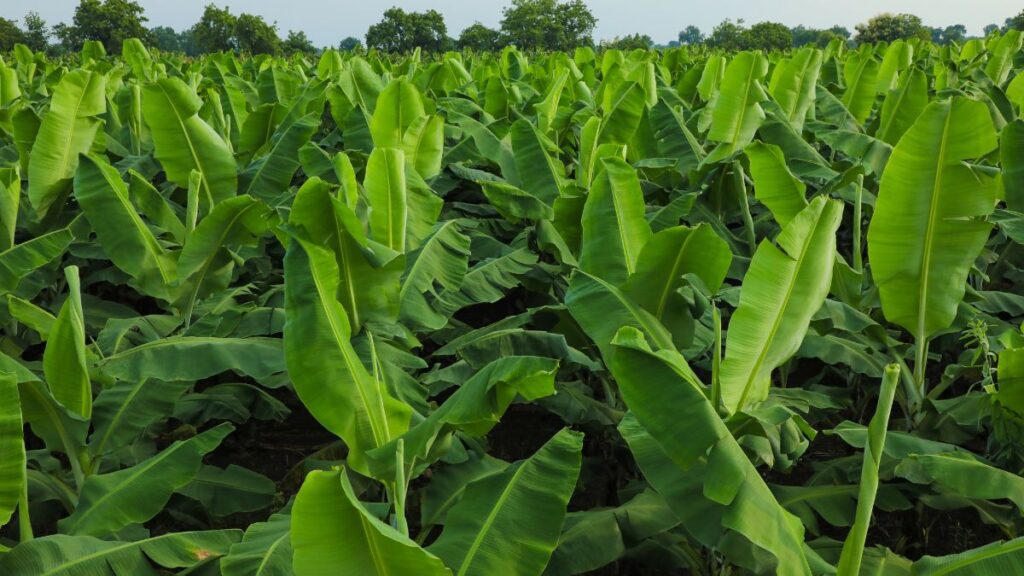There are two main types of banana plants: dessert bananas and plantains. Dessert bananas are sweet and typically eaten raw, while plantains are starchy and often used in cooking.
Banana plants are classified into various cultivars based on their size, flavor, and usage. They can be grown in tropical and subtropical regions and are an important staple food for many people around the world. Banana plants are a diverse and essential crop, providing food and economic livelihoods for communities globally.
Understanding the different types of banana plants and their characteristics is crucial for agricultural practices and culinary applications. Whether you are a farmer, consumer, or simply a banana enthusiast, learning about the various types of banana plants can enhance your knowledge and appreciation for this popular fruit. We will explore the different types of banana plants, their uses, and their significance in both local and global contexts.
The Origin Of Banana Plants
Banana plants, belonging to the Musa genus, have an intriguing origin that dates back thousands of years. Understanding the origin of banana plants sheds light on their evolution and diversity, ranging from wild species to cultivated varieties.
Wild Banana Species
Wild banana species, also known as ‘wild bananas’ or ‘wild plantains’, are native to the tropical regions of Southeast Asia and parts of Australia. These wild varieties are revered for their hardiness and resilience, playing a crucial role in the natural evolution of cultivated bananas.
Cultivated Banana Varieties
Cultivated banana varieties, on the other hand, have been selectively bred and domesticated over generations to enhance desirable traits such as flavor, texture, and disease resistance. The cultivation of bananas has resulted in an array of distinct varieties, each with unique characteristics and culinary uses.
Exploring The Different Types Of Wild Banana Plants
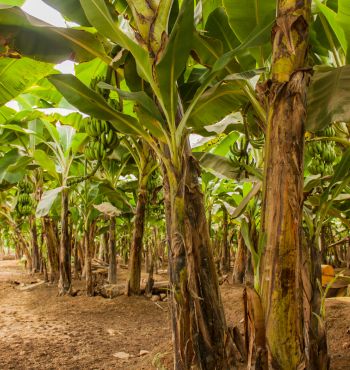
Horn Plantains
The horn plantain, also known as the African horn banana, is a type of plantain that is characterized by its elongated and angular shape, resembling a horn. These bananas are a staple in African and Caribbean cuisines and are often cooked when green and are used in savory dishes. They have a starchy, firm texture and are highly versatile in cooking. The horn plantains are rich in potassium and fiber, making them a nutritious addition to any diet.
Fe’i Bananas
Fe’i bananas, also known as mountain bananas, are a group of wild banana plants that are native to the Pacific Islands. These bananas are small in size and come in a variety of colors, including red, orange, and purple. They have a sweet, creamy taste and are often consumed raw or used in desserts. Fe’i bananas are rich in vitamins and minerals, making them a nutrient-dense fruit that offers various health benefits.
Red Bananas
Red bananas are a distinct variety of wild banana plants with a vibrant red or maroon skin and sweet, creamy flesh. They are slightly smaller than the typical yellow bananas and are known for their unique flavor, which is often described as being sweeter and more robust than regular bananas. Red bananas are a good source of antioxidants and contain high levels of vitamin C and beta-carotene, providing a significant nutritional boost to any diet.
Blue Java Bananas
Blue Java bananas, also known as ice cream bananas or Hawaiian bananas, are a rare and exotic type of wild bananas. These bananas are known for their distinctive blue-green skin and a sweet, creamy flesh that resembles the taste of vanilla ice cream. They are often eaten raw and are prized for their tropical flavor and smooth texture. Blue Java bananas are rich in potassium and vitamin B6, offering a unique and nutritious addition to any fruit selection.
Unveiling The Wide Variety Of Cultivated Banana Varieties
When it comes to bananas, most people are familiar with the classic yellow fruit found in grocery stores. However, there is a wide variety of banana plants that produce different types of bananas, each with its own unique characteristics and flavors. In this article, we will explore four popular cultivated banana varieties: Cavendish Bananas, Gros Michel Bananas, Lady Finger Bananas, and Plantain Bananas.
Cavendish Bananas
Cavendish Bananas are the most common type of banana found in supermarkets around the world. They are known for their bright yellow color when ripe and slightly sweet flavor. These bananas are firm and ideal for eating fresh or using in baked goods, smoothies, and desserts. They are also resistant to the Panama disease, a fungal infection that wiped out the previously popular Gros Michel Banana variety.
Gros Michel Bananas
Gros Michel Bananas were once the dominant banana variety until the 1950s when they were severely affected by the Panama disease. This disease led to the decline of the Gros Michel Banana in commercial production. This variety had a rich, creamy texture and a strong sweet flavor. Although no longer widely available, some small-scale growers and enthusiasts still cultivate Gros Michel Bananas for their unique taste.
Lady Finger Bananas
Lady Finger Bananas, also known as baby bananas or petite bananas, are smaller in size compared to the traditional Cavendish Bananas. They feature a delicate, creamy texture and a sweet taste with hints of tartness. With their unique appearance and compact size, Lady Finger Bananas are perfect as a healthy snack on-the-go or for adding to fruit salads and smoothie bowls.
Plantain Bananas
Plantain Bananas are commonly used as a cooking banana rather than being consumed raw. They have a starchy texture and are less sweet than the Cavendish or Gros Michel Bananas. Plantain Bananas are often cooked, boiled, or fried, and are an essential ingredient in many traditional dishes throughout Latin America, Africa, and the Caribbean. They add a unique flavor and texture to various savory and sweet recipes.
In conclusion, the cultivated banana plant world is diverse, with each variety offering unique attributes and flavors. From the widely available Cavendish Bananas to the less common Gros Michel Bananas, petite Lady Finger Bananas, and versatile Plantain Bananas, there is a banana variety for every taste and culinary preference.
Rare And Exotic Banana Plants
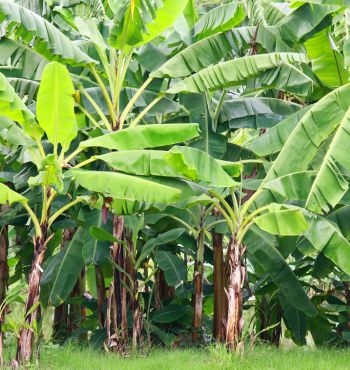
If you’re passionate about unique and extraordinary plants, then exploring the world of rare and exotic banana plants will leave you amazed. These exquisite varieties not only add a touch of elegance to your garden, but they also offer a delightful twist on the classic banana flavor. With their vibrant colors, unusual shapes, and distinct flavors, these rare and exotic banana plants are sure to captivate any plant lover or culinary enthusiast.
Ice Cream Bananas
Ice Cream Bananas are a true treat for both the eyes and the taste buds. With their creamy texture and flavor reminiscent of vanilla ice cream, these bananas offer a unique and indulgent experience. Native to Southeast Asia, Ice Cream Bananas boast a distinct pale yellow color and are slightly smaller than the typical Cavendish bananas you might be used to. Additionaly, Ice Cream Bananas are packed with essential nutrients like vitamin C, dietary fiber, and potassium, making them a healthy and delicious option for any fruit lover.
Goldfinger Bananas
Goldfinger Bananas are a golden gem among banana enthusiasts. This exotic variety originates from Honduras and is characterized by its rich yellow color and sweet, tropical flavor. Known for its resistance to diseases that commonly affect other banana plants, Goldfinger Bananas are a popular choice for home gardeners. These bananas are often favored for their firm texture, making them ideal for cooking and baking. Their versatility, combined with their striking appearance, makes Goldfinger Bananas a standout addition to any garden.
Manzano Bananas
Manzano Bananas, also known as “Apple Bananas,” are a delightful sight to behold. Originating from Central and South America, these small, plump bananas are widely admired for their unique apple-like flavor and sturdy skin. Manzano Bananas are generally rounder and thicker than most banana varieties, with a vibrant yellow color that turns black when fully ripe. They are often enjoyed fresh or incorporated into various culinary creations, such as desserts and smoothies. These charming and delectable fruits are a must-have for banana enthusiasts seeking a new taste adventure.
Banana Hybrids-The Best Of Both Worlds
Banana hybrids offer the best of both worlds, combining the desirable traits of different types of banana plants. From taste to texture and even resistance to diseases, these hybrids offer a unique and exciting variety of bananas for enthusiasts to enjoy.
Bananas are a beloved fruit worldwide, known for their delightful taste and nutritional benefits. But did you know that there are different types of banana plants? One fascinating category is banana hybrids, which combine the best qualities of two distinct banana varieties to create something truly exceptional. In this article, we will explore some popular banana hybrids and the unique features that make them stand out.
Goldfinger Bananas
Goldfinger bananas are a remarkable banana hybrid variety that brings together the best traits of the Cavendish and a wild banana species. These bananas boast a luscious golden color and a sweet, tangy flavor that is sure to tantalize your taste buds. The Goldfinger bananas are not only delicious but also offer a creamy texture that melts in your mouth. Another advantage of these beauties is their resistance to diseases like Fusarium wilt, making them a popular choice among growers.
Mysore Bananas
Mysore bananas are a hybrid between the Rasthali and the Poovan banana varieties. These bananas feature a slender shape and a delicate yellow skin that gradually develops brown spots when ripe. What sets Mysore bananas apart is their unique fragrance and rich, buttery taste. They are commonly used in cooking, especially in South Indian cuisine, to add a touch of sweetness and aroma to various dishes. Whether eaten raw or prepared in traditional recipes, Mysore bananas are a flavorful choice.
Enano Bananas
Enano bananas, also known as Dwarf bananas, are a hybrid of the Cavendish and the Lady Finger banana varieties. As the name suggests, these bananas are smaller in size, making them a convenient snack option. Enano bananas have a slightly tangy and citrusy flavor, along with a firm flesh that provides a satisfying crunch. They are easy to peel and perfect for enjoying on the go or using in desserts and smoothies. Enano bananas offer a delightful combination of taste, portability, and versatility.
Health Benefits And Culinary Uses Of Different Banana Types
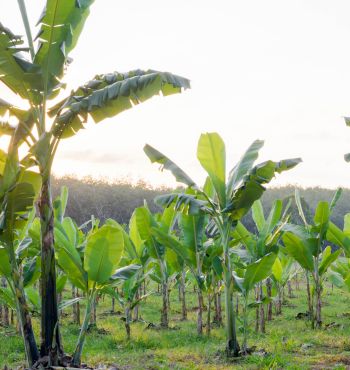
When it comes to the health benefits and culinary uses of different banana types, you’ll be pleasantly surprised at the variety that this humble fruit has to offer. Not only are bananas packed with essential nutrients, but they can also be incorporated into traditional cuisines and used to create specialty desserts and smoothies.
Nutritional Value
Bananas are a powerhouse of nutrition, offering a range of health benefits. Notably, they are an excellent source of potassium, which is essential for maintaining healthy blood pressure levels and supporting proper heart function. Bananas are also rich in dietary fiber, aiding in digestion and promoting a feeling of fullness, making them a great choice for weight management. Additionally, they deliver essential vitamins such as vitamin C, vitamin B6, and magnesium.
Bananas In Traditional Cuisine
In traditional cuisines around the world, bananas are a versatile ingredient that adds flavor and texture to various dishes. In Asian cuisine, bananas are used in savory dishes such as curries and stir-fries to lend a touch of sweetness. They are also commonly fried and served as a side dish or snack. In African cuisine, bananas are often pounded into a paste and used as a base for stews and soups. This adds a unique depth of flavor to the dishes and also offers additional nutritional benefits.
Specialty Desserts And Smoothies
If you’re looking to satisfy your sweet tooth, bananas can be used in a multitude of specialty desserts and smoothies. From classic banana bread to banana pudding and banana ice cream, there are plenty of ways to indulge in this fruit’s natural sweetness. Bananas can also be blended into delicious smoothies, offering a refreshing and nutritious beverage option. Whether you prefer a simple banana smoothie or want to experiment with other ingredients like berries or peanut butter, the possibilities are endless.
Sustainable Farming And Banana Diversity
When it comes to sustainable farming and banana diversity, it is essential to understand the varied types of banana plants and their importance in agricultural conservation efforts. Preserving rare banana varieties and promoting their diversity is crucial for sustainable farming practices. Conservation efforts aim to safeguard the genetic diversity of banana plants, ensuring their resilience and ability to adapt to changing environmental conditions.
Preserving Rare Banana Varieties
Preserving rare banana varieties is a vital aspect of sustainable farming, as it helps maintain the genetic diversity of bananas. Through preservation efforts, unique and endangered banana species can be protected from extinction, ensuring the continuation of diverse banana cultivation practices.
Conservation Efforts
Conservation efforts play a pivotal role in maintaining the diversity of banana plants. By conserving rare and endangered banana varieties, farmers and agricultural organizations contribute to the sustainability of banana farming. These efforts also support the resilience of banana crops, strengthening their ability to withstand pests, diseases, and environmental changes.
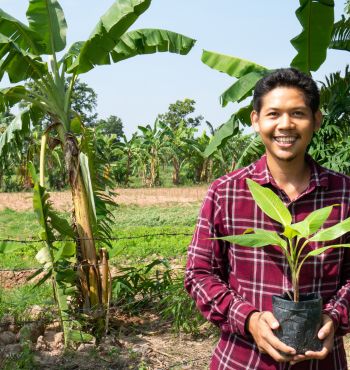
Challenges And Threats To Banana Diversity
Bananas are an essential food crop globally, serving as a staple for millions of people. However, there are various challenges and threats that impact the diversity of banana plants, potentially jeopardizing their sustainability. Understanding the obstacles faced by banana plants can lead to informed actions for their conservation and preservation.
Disease And Pests
Banana plants are susceptible to several detrimental diseases and pests, posing a significant threat to their diversity. The spread of diseases such as Panama disease and Black Sigatoka, along with infestations by pests like nematodes and weevils, can severely impede the growth and survival of banana plants. Implementing robust disease and pest management strategies is crucial to preserve the genetic diversity of banana plants.
Monoculture And Loss Of Genetic Diversity
Monoculture, the widespread practice of cultivating a single variety of bananas, contributes to the loss of genetic diversity within banana plants. This uniformity makes them highly vulnerable to diseases, pests, and environmental changes, thereby jeopardizing their resilience. Promoting diverse cultivation practices and preserving wild banana species is vital to counteract the loss of genetic diversity and ensure the long-term survival of banana plants.
Celebrating Banana Diversity-Festivals And Exhibitions
Bananas are not just a delicious and nutritious fruit but also a source of cultural celebration. People from different parts of the world come together to honor the diverse varieties of banana plants through exciting festivals and exhibitions. These events provide a unique opportunity to explore the rich history, flavors, and uses of bananas. Let’s take a closer look at the vibrant world of banana festivities.
Banana Festivals Around The World
Banana festivals are a global phenomenon, showcasing the beauty, versatility, and economic significance of this tropical fruit. Here are some renowned banana festivals celebrated around the world:
- International Banana Festival, Quepos, Costa Rica: An exciting week-long celebration featuring parades, concerts, dance performances, and banana-themed competitions. Visitors can also indulge in mouthwatering banana delicacies.
- Mela-Banana Festival, Guimaras, Philippines: This festival pays homage to the unique and delectable flavors of Guimaras bananas. Visitors can enjoy a wide array of banana-inspired dishes, art exhibitions, and cultural performances.
- Banana Festival, Fulton, Kentucky: Held annually, this festival showcases the agricultural heritage of the region, with entertainment, live music, 5k runs, and even a banana pudding contest, delighting locals and visitors alike.
Banana Exhibitions And Shows
Banana exhibitions and shows provide a platform for experts and enthusiasts to come together and explore the world of banana plants in more detail. These events often feature demonstrations, educational sessions, and interactive displays that showcase the various aspects of banana cultivation and utilization. Some notable banana exhibitions and shows include:
- International Banana Convention: A leading event in the banana industry, this convention brings together growers, researchers, and industry leaders to discuss the latest trends and advancements in banana production, genetics, and marketing.
- Banana Heritage Museum, Netherlands: This unique museum is dedicated to the history of bananas, exhibiting an extensive collection of banana-related artifacts, photographs, and artworks, offering visitors an intriguing glimpse into the cultural significance of bananas.
- World Banana Forum: An international platform that addresses sustainability challenges in the banana sector, this forum brings together stakeholders from across the globe to share knowledge and solutions for a healthier and more sustainable banana industry.
Whether you want to immerse yourself in the lively atmosphere of a banana festival or expand your knowledge at a banana exhibition, these events provide a fascinating insight into the world of banana plants. So, mark your calendars and get ready to celebrate the diversity and cultural significance of the beloved banana!
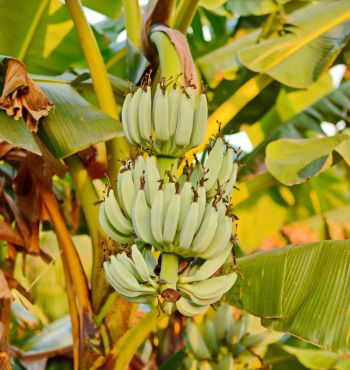
Frequently Asked Questions For Types Of Banana Plants
How Do I Identify A Banana Plant?
A banana plant can be identified by its large, elongated leaves with a smooth texture and vibrant green color. The plant also produces clusters of flowers that eventually develop into bananas.
What Is The Best Banana Plant Variety?
The best banana plant variety depends on individual preferences and growing conditions. Some popular varieties include Cavendish, Lady Finger, and Dwarf Cavendish. It’s important to consider factors like flavor, size, and disease resistance when choosing the best variety for your needs.
What Are The 5 Varieties Of Banana?
The five varieties of bananas are Cavendish, Lady Finger, Plantain, Red, and Blue Java. Each has unique flavors and uses.
Conclusion
To sum up, this blog post explored various types of banana plants, including the Cavendish, Lady Finger, and Plantain varieties. Each type possesses its unique characteristics, taste, and uses. Whether you enjoy the sweeter taste of the Cavendish, the smaller size of the Lady Finger, or the starchy nature of Plantains, there is a banana plant for every preference.
By understanding the different types, you can make informed choices when selecting bananas for your next recipe or snack. Happy banana hunting!
